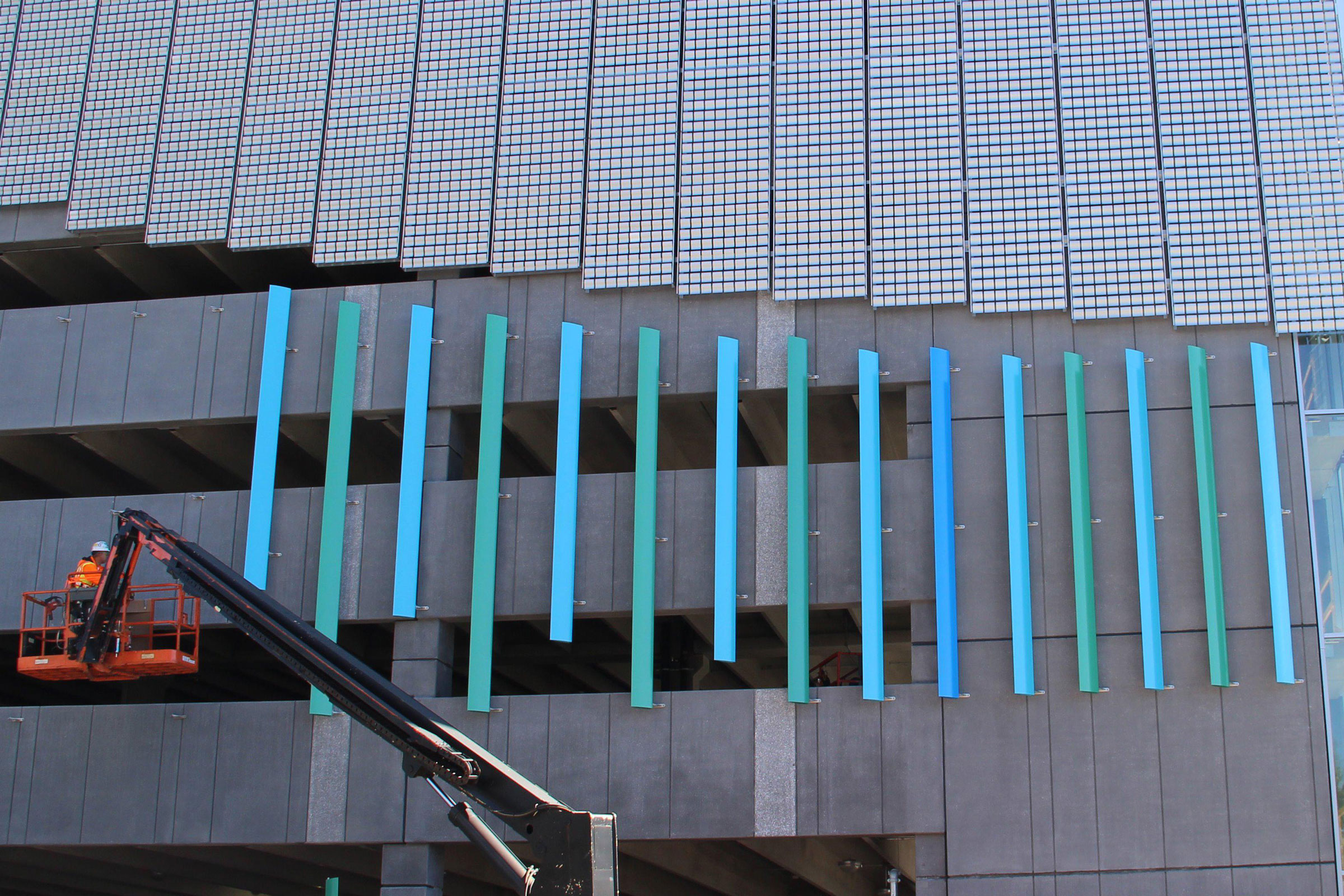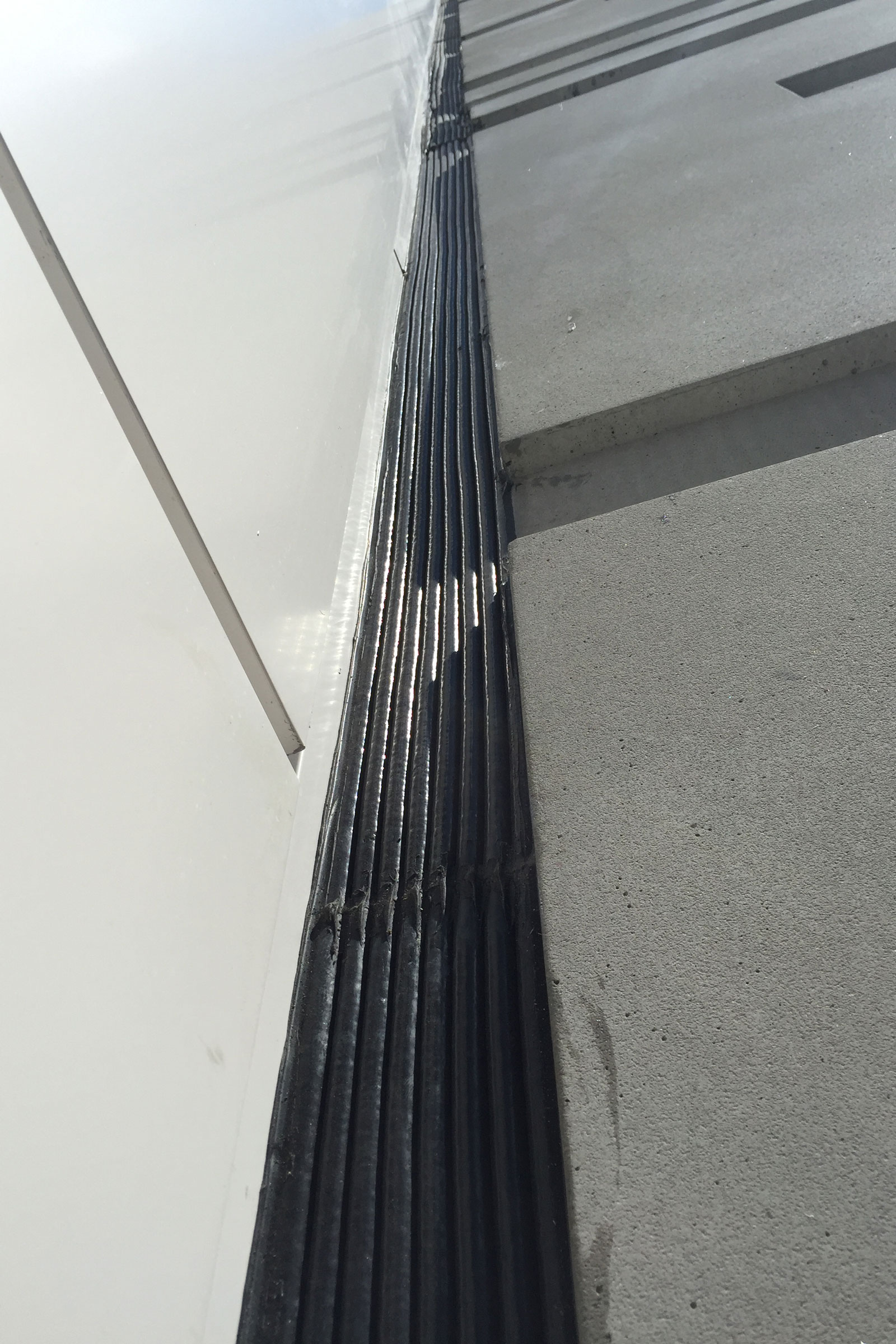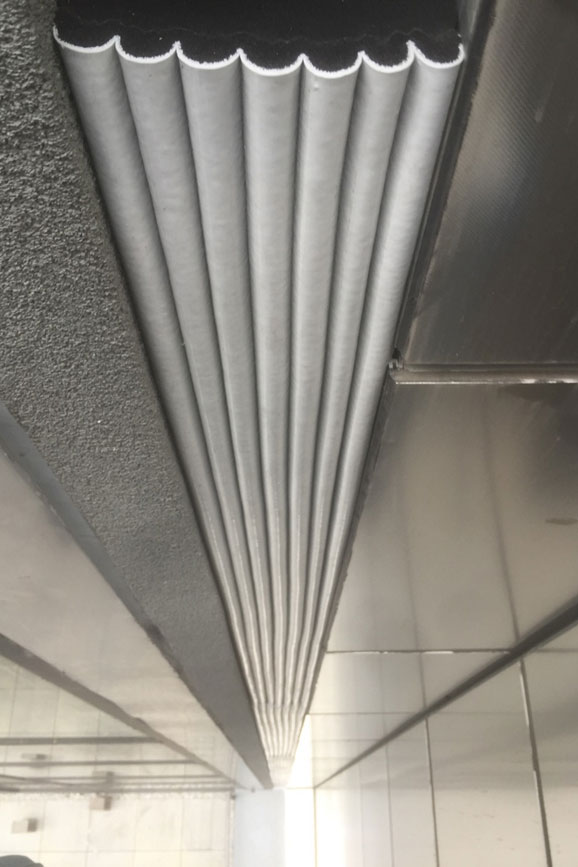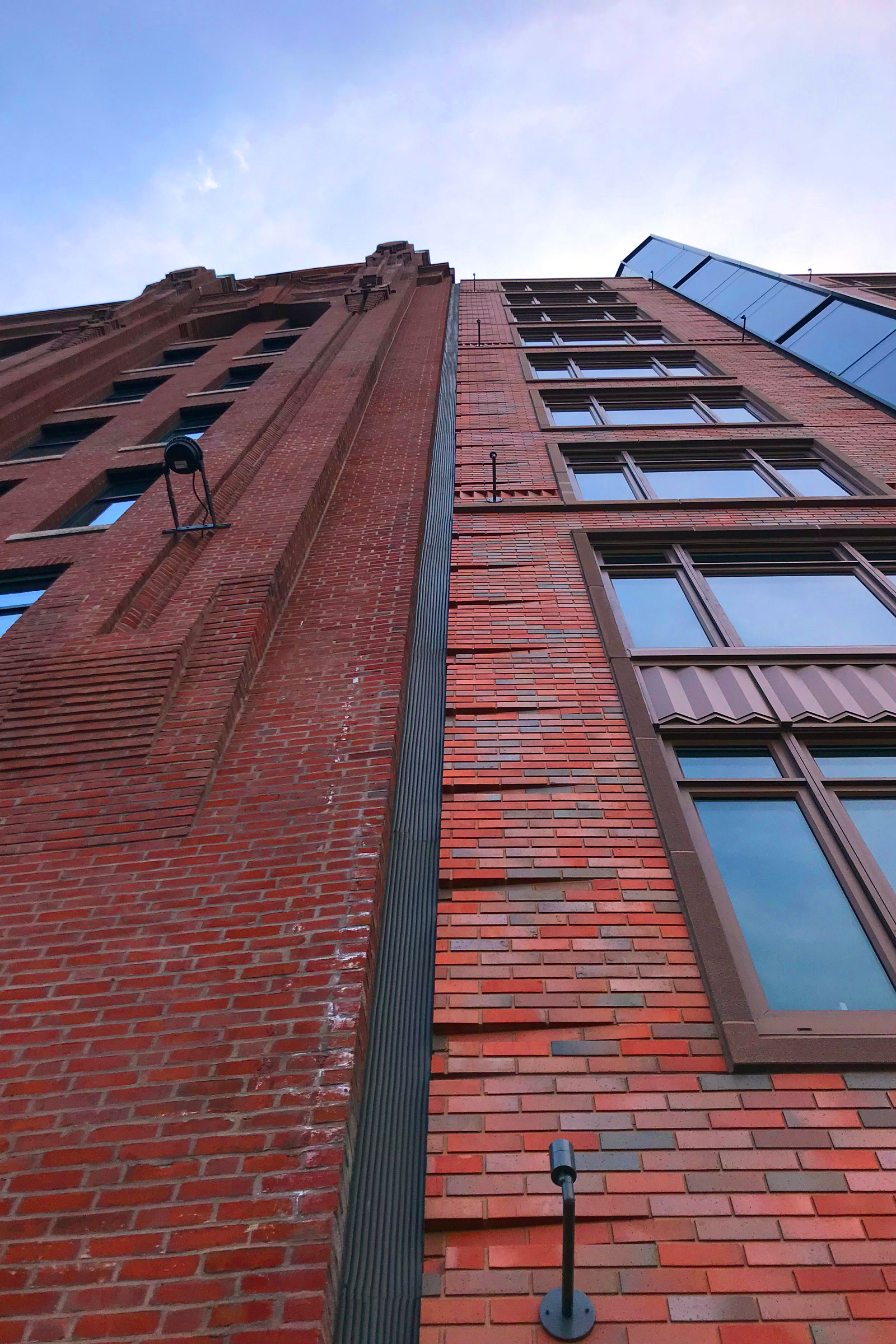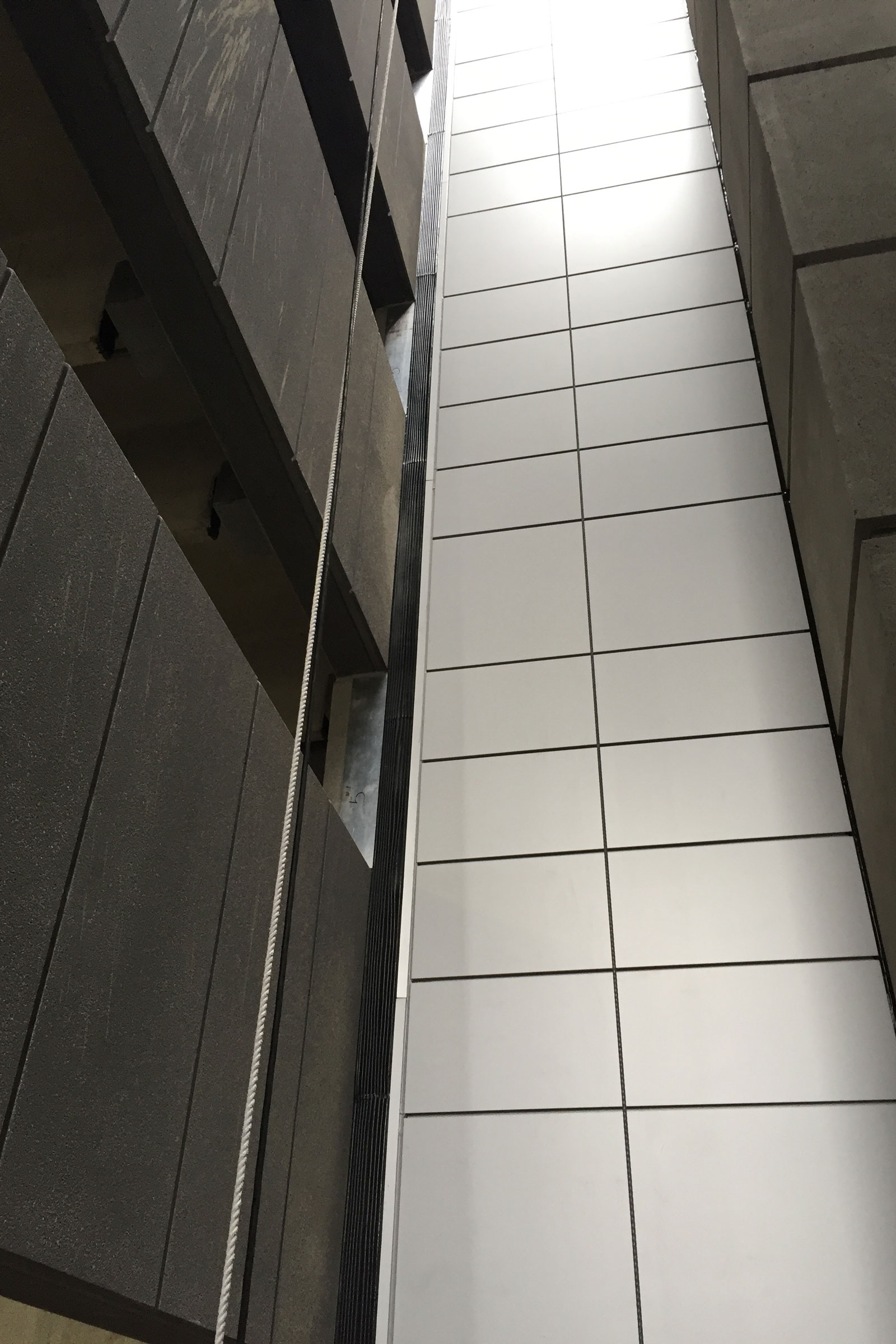Story at a glance:
- Buildings change over time due to both materiality and environmental impacts.
- Pre-compressed foam expansion joints can help ensure building longevity and occupant comfort and safety, among other benefits.
- Pre-compressed foam technologies are installer-friendly and have improved fire safety compared to traditional sealants.
No building is resistant to change. The structures that are best poised to stand the test of time are those where builders and architects have anticipated just how they might change over time—both due to the materials and the environment around it.
“All building materials have some sort of coefficient of expansion,” says Steve Pierson, Tremco CPG building envelope connections category manager. Environmental influences like seismic events, extreme weather, and even seasonal temperature changes can also impact a building, causing expansion and contraction that could put a building’s structural integrity and occupants at risk.
“That’s why we need expansion joints to support structures as they experience expansion and contraction,” says Pierson, who specializes in sealants and has more than 10 years’ experience in commercial construction. Also called a movement joint, expansion joints are discreet gaps that are designed into various building elements to accommodate natural movement without sacrificing the continuity or performance of those elements. The joints may be sealed with backer rod and sealant, pre-compressed foam, extruded rubber glands, metal systems, or even combinations of materials to fill and protect the openings. “If we didn’t have them designed into our buildings, various interface points would experience premature failure, and you’d be in trouble.”
Pre-compressed foam expansion joints are one solution that can help fend off future building envelope failures. This type of joint sealant consists of a factory-compressed foam that is manufactured in sticks or rolls, offered at varying widths, that can be cut to any length. They can be specified with or without a factory-applied pre-cured liquid sealant facer. Compatible with most commercial construction substrates, including metal, concrete, mortar, stone, and wood, they self-expand to fill the joint when installed and are capable of up to plus or minus 50% movement from the mean joint size.
“The main difference between a pre-compressed foam and a traditional expansion joint filler, such as a sealant and backer rod, is how the joint opens up and if it experiences tension. With a traditional expansion joint filler, the joint is in tension as it opens up, and that puts stress on the sidewalls of the joint,” Pierson says. “On the other hand, a pre-compressed foam is constantly pressing outward on the walls of the joint, so it’s always in compression. There’s never any tension in the system. In layman’s terms pre-compressed foam is a little bit gentler on the joints, so there is much less likelihood of a joint failure that would allow air or moisture to penetrate the wall cavity, causing mold growth or structural damage.”
In buildings made from concrete or with metal joints, using pre-compressed foam technologies might not be a make-or-break building solution. “But some substrates, like stucco or exterior insulation and finish systems, benefit from a highly compliant joint filler,” Pierson says. “That’s where pre-compressed foam, which puts less stress on sidewalls of the opening, is a huge advantage.”
Here are seven key benefits pre-compressed foam expansion joints can bring to your next project.
1. Easy Installation
- Photo courtesy of Tremco CPG
- Photo courtesy of Tremco CPG
Pre-compressed foam technologies can be used for horizontal and vertical joints and can be ordered with a factory applied, pre-cured liquid sealant facer. That means you don’t have to hold up construction timelines waiting for the perfect environmental and installation conditions or added curing time required for traditional liquid sealant products. Pre-compressed foam expansion joints are also installer-friendly in that they do not require the same type of specialized workmanship or training to install compared to backer rod and sealant methods.
2. Low VOCs
Because pre-compressed foam expansion joints come with pre-cured sealant facers and arrive at the project site ready for installation, there are no VOC concerns for construction crews or future occupants. “There is no real off-gassing to speak of with pre-compressed foam joints,” Pierson says.
3. Increased Sustainability
Pre-compressed foam technologies offer several environmental benefits that traditional expansion joint sealants don’t.
“There’s definitely less jobsite waste with pre-compressed foam expansion joints,” Pierson says. “You don’t have tubes or pails of material that accumulate onsite.”
Pre-compressed foam technologies also add a layer of insulation, which increases energy efficiency, reduces heat transfer, and increases a building’s R value.
4. Acoustical Performance
Foam is naturally able to reduce the transmission of sound waves, resulting in decreased noise pollution between the interior and exterior environments. The foam can increase the sound transmission class (STC) of a wall assembly and improve sound attenuation performance (the higher the STC number, the more sound is blocked). Especially for structures near high-traffic areas or where occupant privacy is important, sound dampening is an important design feature for owners and tenants.
5. Improved Fire Safety
- Photo courtesy of Tremco CPG
- Photo courtesy of Tremco CPG
In case of a fire foam expansion joints can play a big role in occupant safety and building longevity. Tremco CPG foam products, under the Willseal brand, are one-, two- and three-hour fire-rated. If a wall assembly is exposed to fire, a two-hour fire rating gives occupants about two hours to evacuate the building.
Pre-compressed foam expansion technologies also help stop the spread of fire and smoke throughout a building by filling in any gaps that horizontal and vertical joints might bring to a wall assembly.
“If you have any breaches in a traditional sealant system, you can get issues with smoke infiltration into adjacent areas,” Pierson says. “A lot of the pre-compressed fire-rated foam expansion joints have an integral smoke seal barrier in them as well as fire-retarding intumescent built into the foam. You get a ‘belt and suspenders’ solution with fire-rated foam expansion joints.”
6. Building Resiliency
Most pre-compressed foam technologies are made of either a closed-cell EVA foam or open-cell polyurethane foam core. The foam core can be treated at the factory with various materials (called “impregnations”) to improve a building’s longevity. Impregnations enhance the foam’s water, fire, and/or vapor transmission resistance.
“From a long-term reliability standpoint, you can get a pre-compressed foam with a long-wearing facer, like a silicone sealant, that’s good for upwards of 25 years or more,” Pierson says. “But behind that you also have the foam core itself, which in something like an open-cell foam, can be impregnated with a hydrophobic compound. So basically if anything makes its way through the sealant, you’ve got that there waiting as a second line of defense.”
7. Customization
Pre-compressed foam technologies can be customized both for different looks and dimensions.
“If the main driver on your projects is aesthetics, pretty much any color, chemistry, or other aspect you require or can imagine can be applied at the plant,” Pierson says. Pre-applying sealant in the controlled setting of a factory ensures a uniform sealant thickness across all sticks, so you know exactly what appearance and performance to expect when the product arrives and is installed.
“The other thing you’re able to do, depending on the type of pre-compressed foam technology, is factory-made transitions, such as changes in plane and or intersections,” he says. For more complex details like a four-way intersection, the foam can be custom manufactured for that connection “so you’re not relying on field fabrication and all the risks that come with it for critical expansion joint intersection points.”

